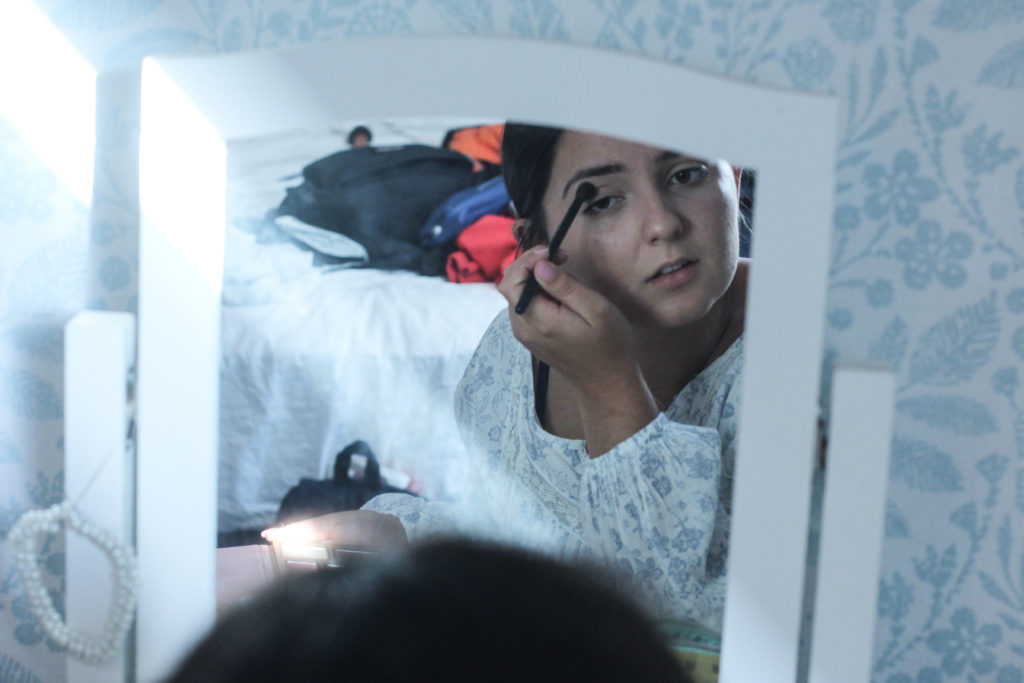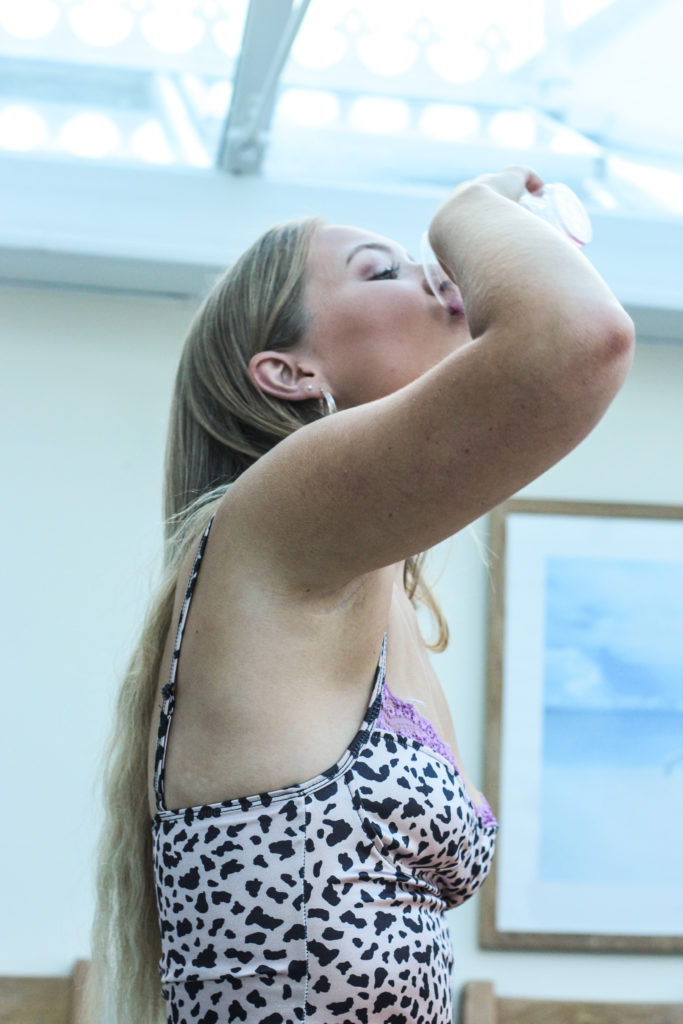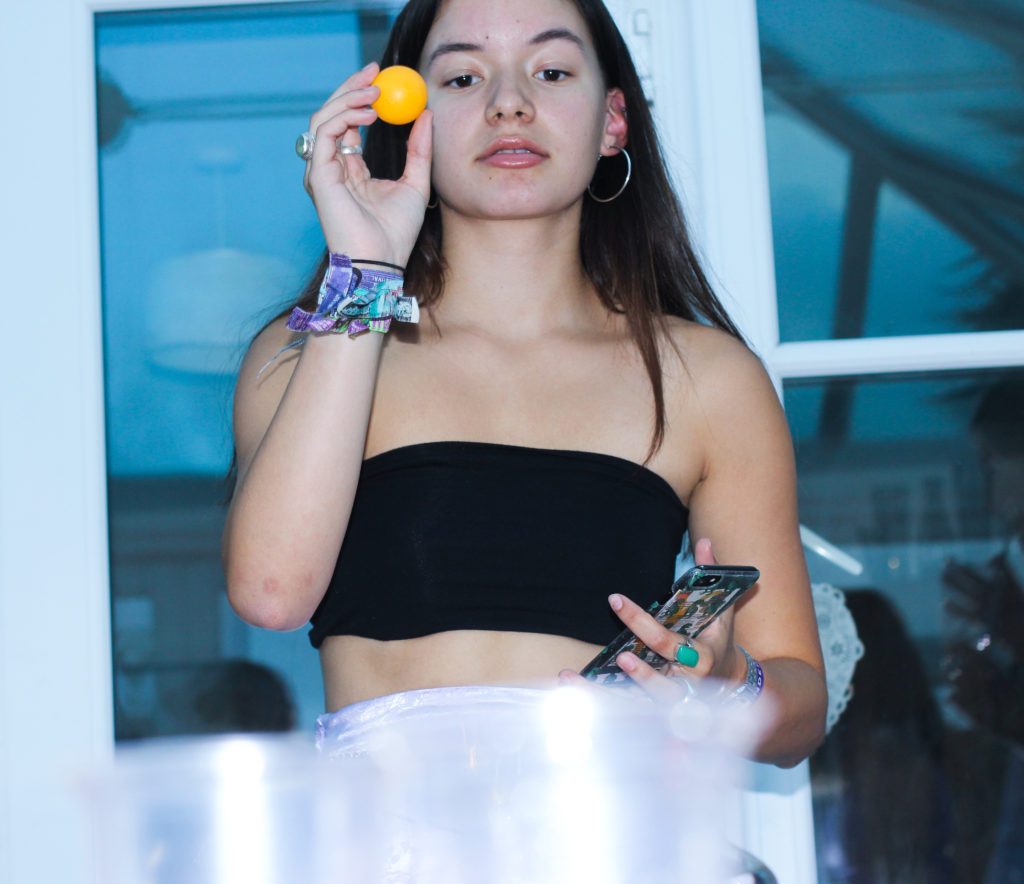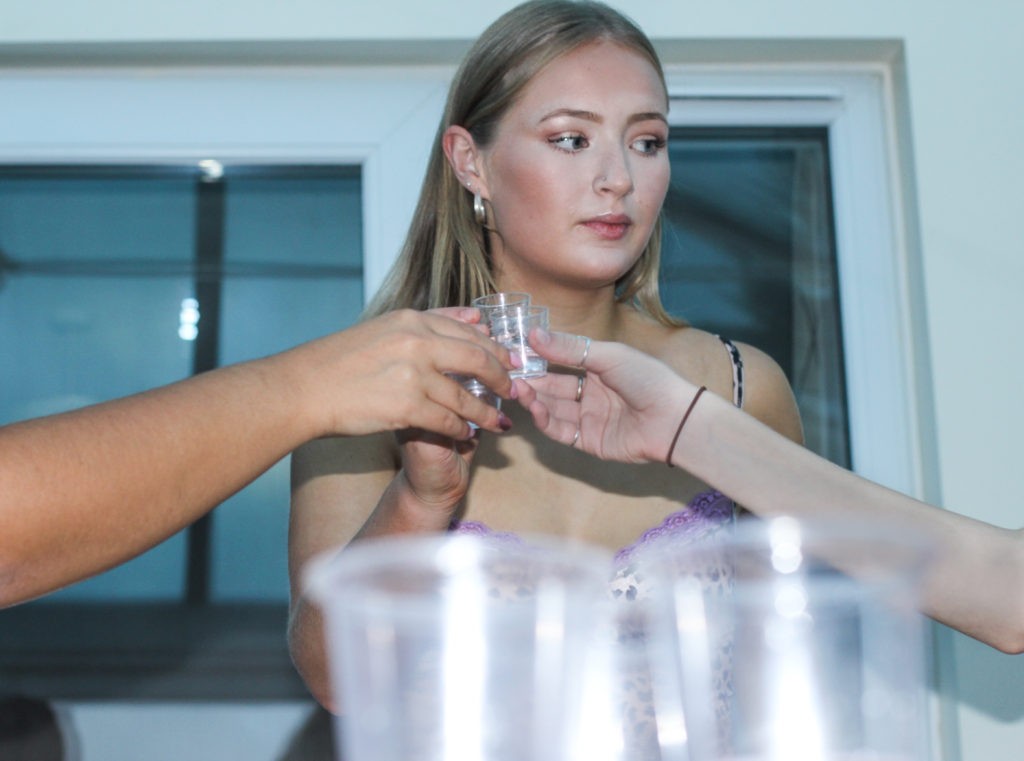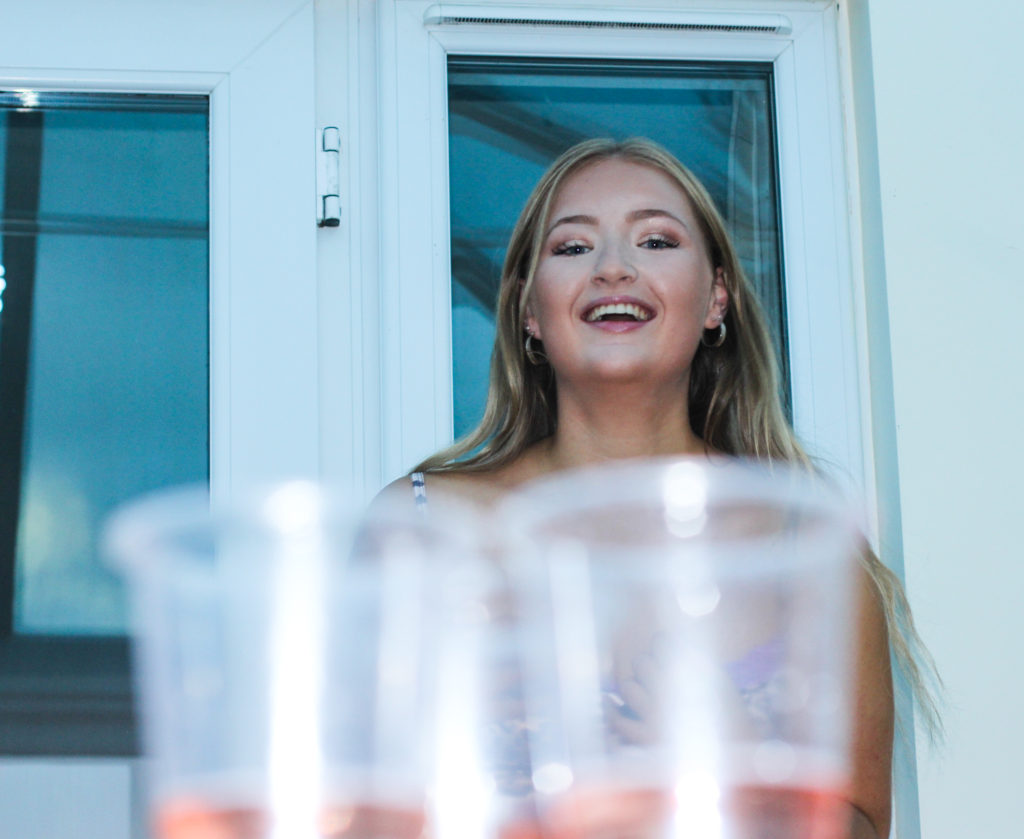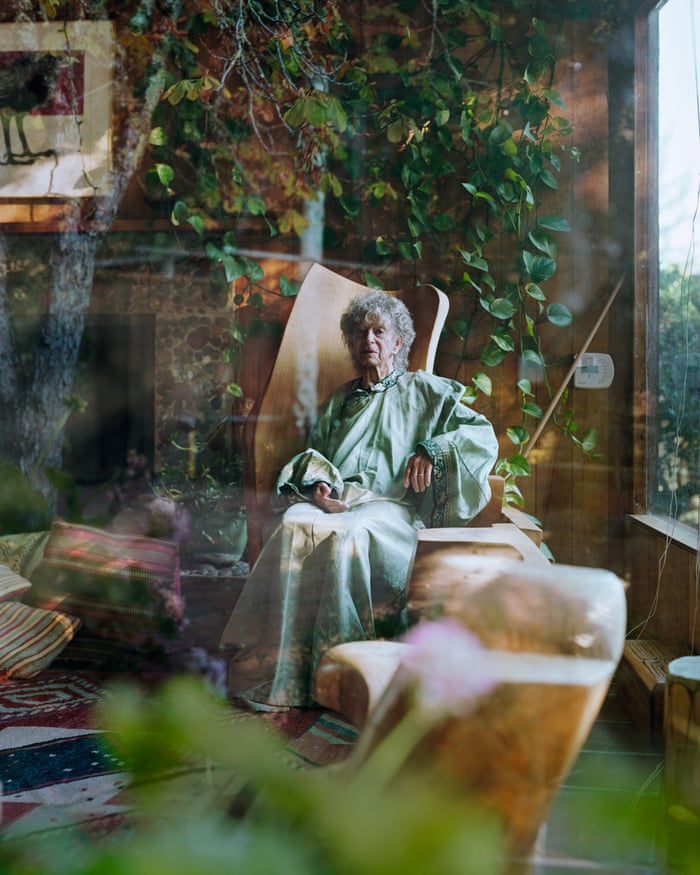Daily Archives: October 1, 2019
Filters
Still-Life: Contextual Studies – Image Analysis

A still-life image painted by Dutch painter Harmen Steenwyck during the 17th century.
The above image is an example of the work produced by Harmen Steenwyck, a Dutch painter active during the 1600’s (the golden age for still-life artwork). Steenwyck is possibly best known for his vanitas artwork, in which he uses skulls and objects to draw attention to mortality, and the inevitability of death. In the above image, Harmen has included a skull as the main focus of the image, concluding that the above image is centered around the theme of mortality, and the fact that no-one can escape it. Harmen also includes a range of other images in this piece of work. The use of green plants (possibly derived from a fruit) is likely a reflection of life, which contrasts the skull in the foreground. The plant appears to be growing out from behind the skull, perhaps reflecting the close connection between life and death, and how one is not itself without the other. Furthermore, the inclusion of a sword is possibly a reflection of high status, as it likely belongs to a soldier or army personnel of a high status (in contrast, the sword could also be a reflection of mortality, and may represent violence and conflict). The inclusion of silverware towards the right of the image also reflects wealth, and so the positioning of all of these prized possessions (including the books and red cloth, perhaps reflecting education and a high social status) as a whole creates a sense of meaningless of these material objects, as they are placed next to the skull and therefore, in the face of death, are redundant. This meaning and imagery within Renaissance still-life artwork was common place, and the use of vanitas was extremely popular, as it opened up a conversation about controversial topics such as mortality in a much more subtle way than ever before.
Still-Life: Contextual Studies – Historical Context
Still-life, by definition, is a work of art depicting an arrangement of objects (such as fruits or flowers), that is either painted, photographed or drawn. Still-life art-work makes use of inanimate objects, which are often easily recognizable and common (such as foods, books and plants). Still life became popular in western societies during the 16th century, and since then has remained a distinct genre of art work thanks to its malleability; as using inanimate objects makes it much easier for artists to experiment and manipulate the objects and scenery, to create the piece of art that best suits their requirements/themes. Still-life artwork often focuses on exploring the form, shape, colour, texture and composition of the objects, while often allowing the artist to include more subtle meanings and metaphors in their work. Below are some examples of still-life work, painting, drawing and photography:



Paintings of inanimate objects have existed since ancient Egypt and Greece, with the Egyptians often placing the artwork in tombs in the hopes that the deceased would be able to use these objects in the afterlife, and Greeks depicting still-life artwork on vases. Although still-life artwork was used for many thousands of years, it was not until the Renaissance that it became its own popular genre of art.
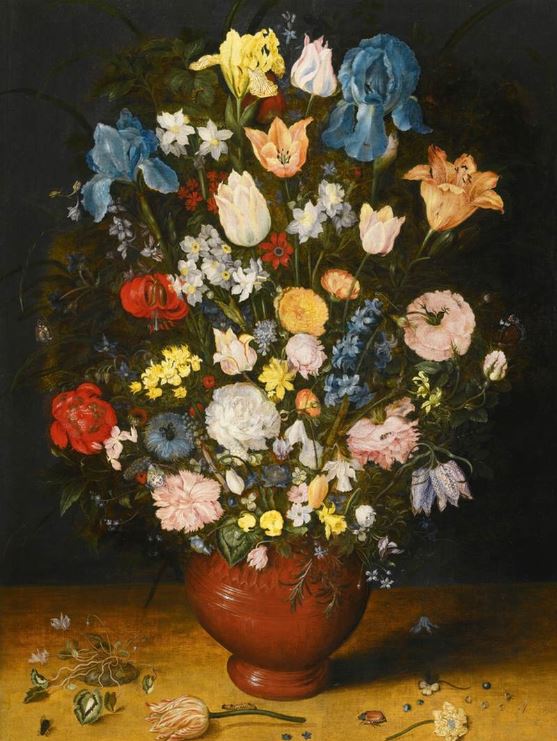
This is an example of an early Renaissance still-life piece, created by Dutch painter, Brueghel 
This is an example of the ancient Egyptians use of still life in their art. Here is a set of flower pots depicted on a wall.
During the Renaissance, still-life became a very popular way of depicting christian imagery and themes such as mortality, life and, more controversially, sexuality. Still-life was especially popular in 17th century art in Dutch and Northern Europe, with Dutch still-life specialists such as Willem Heda and Jan van Huysum producing work that followed the still-life genre.

The above image is a still-life painting produced by Jan van Huysum 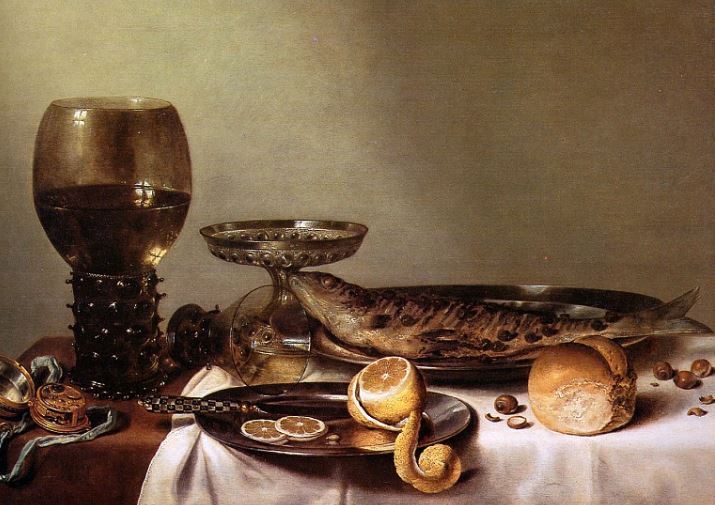
This painting is a still life painted by
Willem Heda
Still-life artwork often challenged societies views in the sense of personal possessions and class, for example, some artwork was made with the idea that love for material objects is meaningless, and other works depicting skulls often brought to light our own mortality. An example of this can be found in Roman works, which depicted skulls and the phrase Omnia mors aequat (Death makes all equal).
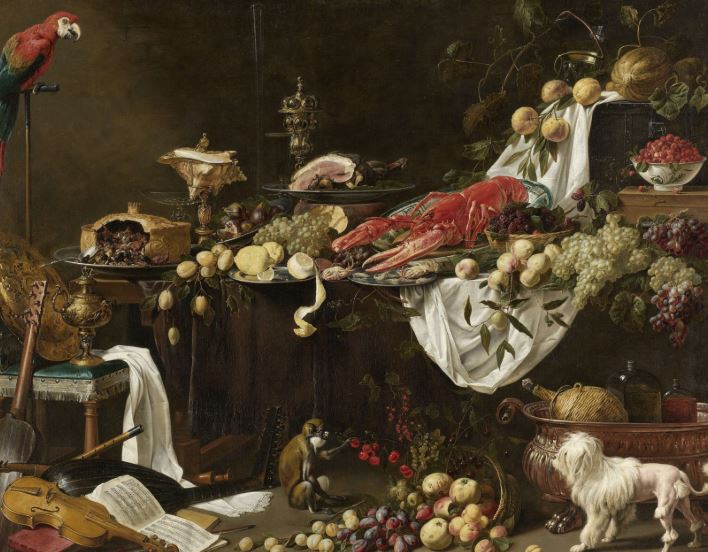
Vanitas paintings (images depicting metaphors for death/illustrating it’s inevitability) also became popular during the Renaissance. At this time, it became common to include skulls, hour-glasses and dead animals in paintings in order to reflect the delicacy of life and the inevitability of death.
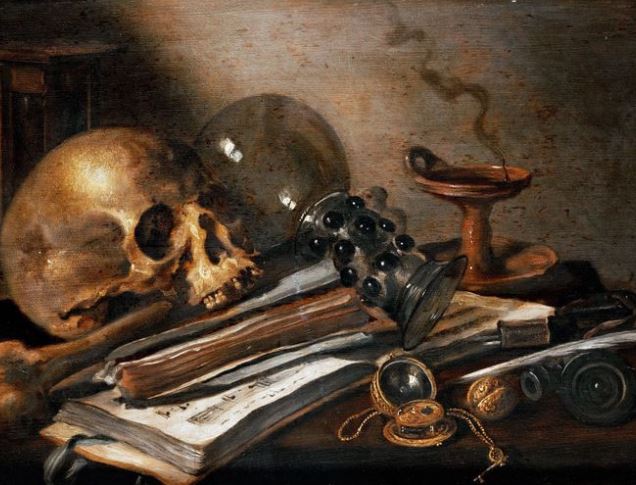
Here is an example of a vanitas painting, depicting a skull. 
This is an example of a piece of Renaissance art depicting dead animals, thus reflecting the same meanings as the traditional vanitas skull.
Home Sweet Home – My Friends (PART 1)
Within hearing the word home, people associate a home with a family. However, no family is perfect, and families don't just consist of blood. Although I do love my family, I also consider my close friends as family. With my friends I feel completely happy and free and my true self. I decided to photograph my friends at 'pres' for a party to truly capture their wild and exciting spirit. I tried to capture my friends when they were least expecting it, such as when they were getting ready or playing beer pong.
The Shoot
This is every photo I took, a lot of them are out of focus as I was having to capture moments very quickly as the photos aren't planned. However I did capture some good shots which I chose out in selection in Lightroom and then manipulated them.


My Manipulated Images (PART 1)
Historical Context: Still Life
“A still life (also known as nature morte or
Stilleven ) painting is a piece that features an arrangement of inanimate objects as its subject.'”
https://mymodernmet.com/what-is-still-life-painting-definition/
When the Dutch republic was created it gave everyone a great sense on national identity which people were extremely proud of. With this pride and the flourishing economy, people started collecting and thus still life portraits became extremely popular with people wanting to show off how wealthy they were or how many interesting artifacts they’d collated from various exotic places. With trade becoming popular with far away and exotic places, 17th century artists couldn’t help but focus highly on these artifacts and adopted a “close scrutiny of the natural world.”. Along with their fixation of capturing light, this created the basis on which the genre of still life was to be built. By the mid-century, still life was common practice and eventually split into its own different categories, with the earliest example being at the beginning of the 1600’s and were the flower paintings inspired by ‘tulip-mania, then followed by flowers with fruit then breakfast pieces.
Examples:
Still Life – Post 3 (Autochrome)
In 1907, the Lumière brothers, Auguste and Louis, introduced the first viable method of color photography. Although color photographs had existed, the process was clumsy and complicated. The key ingredient, the Lumières discovered, was potato starch.

The process, called autochrome, involved covering a glass plate with a thin wash of tiny potato starch grains dyed red, green, and blue, thus creating a filter. A thin layer of emulsion was added over that. When the plate was flipped and exposed to light, the resulting image could be developed into a transparency. Autochrome was immediately popular in Paris, where it was introduced, and soon spread to the United States. Like early black and white photography, autochrome was a slow process. Because exposures were long, subjects had to stay still—sometimes unsuccessfully—to avoid a blurred image. But with autochrome, the blur had an unusual aesthetic effect. Paired with the soft, dyed colors, it made the photo look like a painting.

Most publishers adopted Kodachrome in the 1930s because it was easier to use. Autochrome required photographers to carry around heavy wooden suitcases filled with fragile glass plates; Kodachrome film, twinned with a 35mm camera, was light and easy to travel with. Today, autochrome is rarely used, and films like Kodachrome have been supplanted by digital. The autochrome plates in archives provide a unique look into the past, to a time before digital precision replaced a softer, painterly look and palette.
Emile Guiton:
Born in Jersey in 1879 he had a keen interest in history and was a member of La Société Jersiaise, served on its executive committee as joint honorary secretary, and was curator of the Museum and editor of the Annual Bulletin.He also realised that history was being made during his own lifetime and he recorded the development of his native island from the turn of the century until his death in 1972. He experimented with Autochrome colour very early in the century. Not only did he record events and activities during his own lifetime, particularly agriculture, but he had a fascination with the past and chronicled with his images many archaeological excavations (his pictures of the interior of La Hougue Bie remain some of the best in existence) as well as photographing Mont Orgueil (Gorey) Castle and other coastal fortifications, sites of geological interest, and architecture. Guiton had a particular interest in the design of Jersey houses over the centuries, and particularly in different styles of arches to be found in the island. He was present at many major events, including the Liberation in 1945 (he had also taken photographs during the German Occupation, and the proclamations of successive monarchs in the Royal Square.
Emile Guiton was a keen amateur photographer and practised throughout his long life. He experimented with colour at the beginning of the twentieth century in “Autochromes”. His subjects include the recording of archaeological excavations and he was one of the few people in Jersey permitted to take photographs during the German Occupation of 1940 – 1945. Emile Guiton also recognised very early on the importance of collecting photographs, both as a valuable social historic resource and as interesting artefacts – examples of developments in science and technology. He donated many images to the Société Jersiaise. He died in 1972.

Hedley and Joyce

As my time to take photos of Joyce and Hedley were limited, I only managed to capture a few images. Here is a screenshot of the non-manipulated images I took. WE took the images in the studio and used key lights in a light box which were connected to the flash commander on the camera. I took this on a canon DSLR and I used a 50m portrait lens.
My Manipulated Images

For this image, I mainly focused on Hedley's face as the light wasn't hitting it. I therefore brightened up some of his face and fixed some of the over exposure on the left side of his face. I then adjusted the white balance of his face to make it more similar to Joyce's face. I also used to spot healing tool to remove a lot of white fluff from his sweater. I also added a bit more brightness into Joyce's eyes so that they're more noticeable.
Experimentation
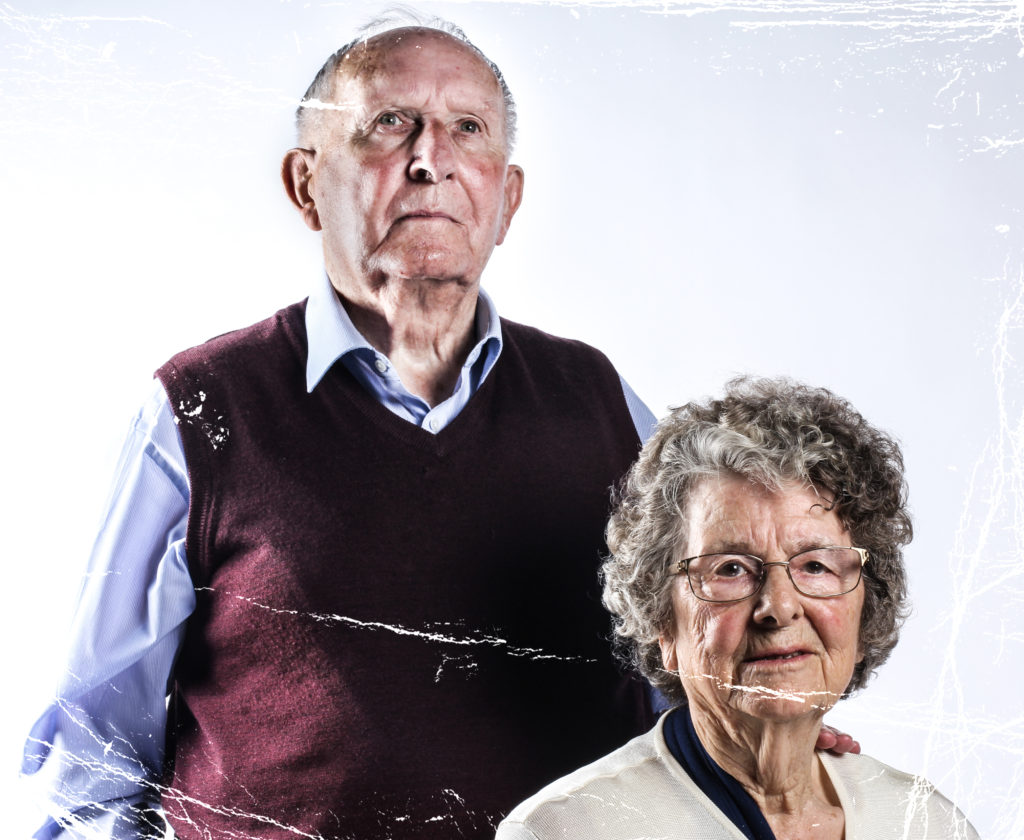

Other Manipulated Image
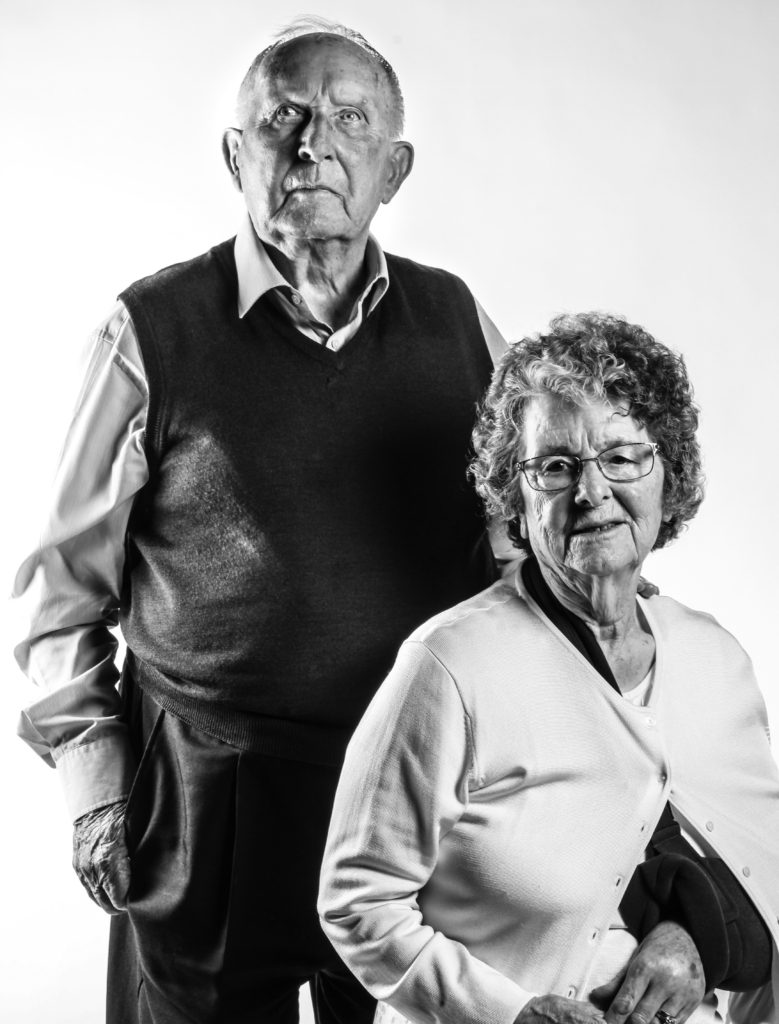
For this image I decided to manipulate this photo to become black and white. This is to reflect that as Hedley and Joyce are old, many of their childhood photos / photos of their parents or grandparents would've been in black and white. I then adjusted the contrast and on particular parts of the face such as around the eyes, I made them brighter to draw more attention to them. Hedley's face was particularly dark in the photo, so i worked on brightening Hedley's face a lot more so his features are a lot easier to see. I also used the spot healing tool on Hedley's jumper to remove fluff balls that were stuck on his jumper.
Experimentation


Still Life – Post 2 (Painting Analysis – Cook maid with Still Life of Vegetables and Fruit)
Cook maid with Still Life of Vegetables and Fruit, painted by Sir Nathaniel Bacon (c.1620-5)
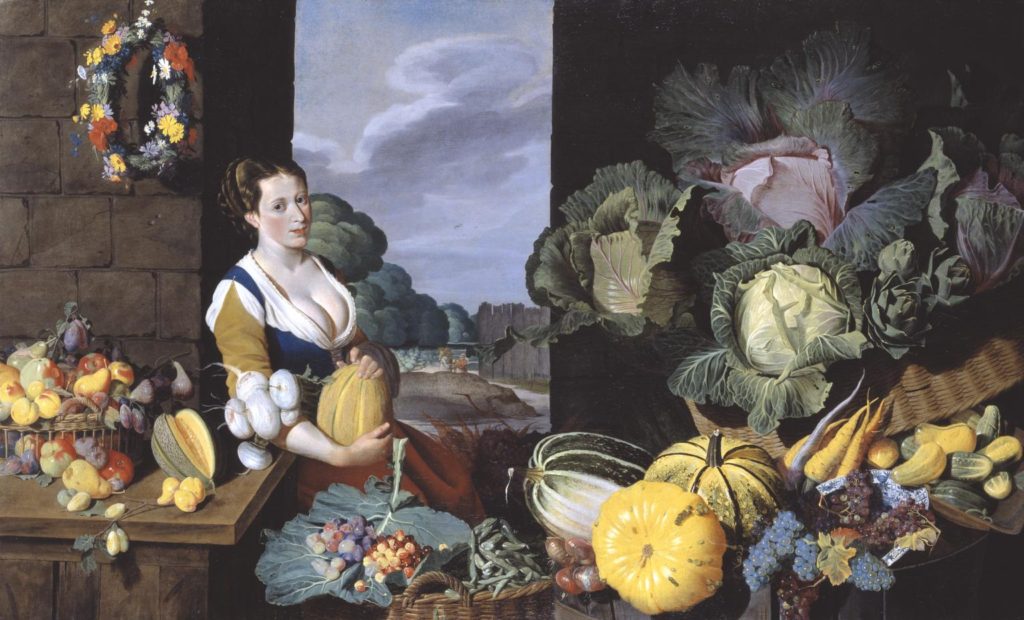
Technical:
Incorporates highlights and shadows, showing a clear understanding of light and dark. This image contains three factors. The stature and framing of the female subject in the centre, as well as the clouds in the sky in the background and a series of fruits and vegetables in the foreground.
Visual:
The image captures a slightly larger woman surrounded by fruits and vegetables, both signify some sort of wealth or financial sustenance to be able to afford those foods and clearly have enough food on the table to thrive. The position of a large fruit over the woman’s belly represents fertility and the ability to carry and produce a healthy child. The composition is very colourful, with fruits and vegetables around the base of the image and a flowery wreath hung up on the wall.
Contextual:
‘Cookmaid’ and market scenes, popular in the seventeenth century, evolved in the Low Countries from a genre practised by Pieter Aertse and his pupil Joachim Beuckalaer, which combined contemporary kitchen scenes with a New Testament episode beyond. An inventory of 1659 connected to the will of the artist’s wife lists ‘Ten Great peeces in Wainscote of fish and fowle’. Two other ‘Cookmaid’ pictures are known to exist: Cookmaid with Still Life of Game and Cookmaid with Still Life of Birds, both in the possession of the artist’s descendants. The Tate’s work is possibly part of this group. Such groups were often intended to depict the four seasons or the twelve months of the year. In the case of this piece, however, although every item represented in the painting was grown in England at the time, not all would have been in season simultaneously. Bacon, according to a letter dated 19 June 1626, was growing melons at his estate in East Anglia, and he was known to have a keen interest in horticulture. The subject would most likely have had erotic connotations. The abundance of ripe melons surrounding the cookmaid echo her figure.
Still Life – Post 1 (Historical Context)
Origins and Definition of Still Life:
Still life paintings have technically been around for thousands of years. The earliest examples of still life paintings were by cavemen dating back toA still life composition is a work of art depicting mostly inanimate subject matter, typically commonplace objects which are either natural or man-made. The art style often uses symbolism and meanings hidden within the image. Still life images should rarely be taken at surface value.
Dutch artists of the 17th Century became renowned for being greatly concerned with ‘a close scrutiny of the natural world.’ This, combined with their preoccupation with perspective and the study of light, provided the fundamental elements of Still Life painting. The term had come into general usage in mid-century, Still Life being the carefully composed portrayal of inanimate objects, such as: fruits, flowers, skulls and other prestigious objects. Living creatures were able to be incorporated as long as they were incidental to the main theme. Still Life, in itself a particular aspect of art, further diversified into different categories.

The Distinct Categories:
The earliest examples, from the beginning of the 1600s and later influenced by ‘tulip-mania’, were the popular floral paintings. These were followed by flowers with fruit, then the humble ‘breakfast pieces’. As the century progressed, and wealth became widespread, so the ‘breakfast’ developed into the ‘banquet piece’, depicting large quantities of high end food and delicacies. Another important facet of Still Life called ‘Trompe L’Oeil’, French for ‘deceive the eye’ – evolved in the mid-century from the game piece and its illusionist appeal to the Dutch. Finally, at the latter part of the century, taste changed, colour and form became more baroque.
Flower Pieces:
Just as painters specialised in different aspects of art, certain towns became the focal points for specific genres. Dutch cities such as Middelburg, Utrecht and Amsterdam were the main centres for flower painting, a genre that was highly regarded and very well paid. The artists, although portraying genuine flowers, depicted them in impossible arrangements such as blooms from all four seasons were shown at once, reflecting the studio practice of painting individual flowers, in season, as studies for future reference. Flowers were accurately detailed without the overlapping that would happen naturally in a vase arrangement. Flowers were ciphers for spring but there was also an evolving symbolism in the language of flowers that was accessible to contemporary viewers. For example the Madonna lily was an attribute of the Virgin Mary, the white iris a symbol of her purity and the rose, of her love. A daisy meant charity, a buttercup represented the unmarried , and the sunflower represented the love of God, or sometimes love of the earth. Some artists presented their work as so-called ‘niche’.

Fruit with Flowers:
Symbolism was highly present at the time in objects such as exotic fruits and shells brought back by trading merchants. Shells had particular appeal to a nation governed by the sea and, with fruit, were often displayed as part of floral compositions. Fruit had a religious message; the apple of temptation, the grape the blood of Christ; and a different shell might represent each continent as visual tribute to the geographic and scientific discoveries of the day.
Breakfast Pieces:
With the introduction in Haarlem and Amsterdam of the Ontbijtje, the Breakfast Piece, the format changed to landscape to accommodate the expanse of a tabletop. Placing the table edge parallel to the horizon, with the table-cover dropping markedly downwards, enhanced the impression of space. The food illustrated was basic – bread, cheese, fruit, nuts, herring – and often presented half eaten for realism. The cutlery and dishes of pewter or pottery were equally simple but skilfully painted. In earlier breakfast pieces, the viewer is looking downwards onto the table, but as the century progresses, the viewpoint is lowered. Like the flowers, the objects were carefully spaced and by the 1620s were projecting over the table edge, creating an illusion of nearness to the viewer. By the 1630s these bright colours were becoming more monochromatic.
PHOTO-ASSIGNMENT 1: Home Sweet Home
ENVIRONMENTAL PORTRAIT:
An environmental portrait is a portrait captured in the subject’s usual environment, such as in their home or workplace, and usually highlights the subject’s life and surroundings. By photographing a person in their natural surroundings, the photographer will be able to illuminate their character better and therefore portray their personality rather than their physical features. It is also thought that by photographing a person in their natural surroundings , the subject will be more at ease, as opposed to in a studio which portrays an artificial experience.
CANDID PORTRAIT:
A candid portrait is where the subject is unaware that a photo has been taken. The idea of a candid portrait is to capture people acting naturally. They should be unaware they are being photographed, as their behaviour often changes once they become aware of the camera.
ALEC SOTH
I Know How Furiously Your Heart Is Beating is a slim book including 35 photographs. The domestic interiors captured in his photographs illuminate the subjects who lives in them. When capturing portraits he looks for interesting people and interesting spaces: “They can be male or female, young or old, rich or poor. The main thing is to have an intimate encounter that is visually strong”.
The reporter Sean O’Hagan, who wrote an article about Alec Soth for the Guardian, watched him work up close as he photographed people who lived in “interesting spaces”. Apparently Soth uses a large glass plate camera on a tripod. The process is difficult and requires patience from the sitter, who has to remain still while Soth sets up the shot, disappearing for a long amount of time under a large blanket. He works in a Victorian way which is more suited for outdoor photography. Under the blanket Soth tries to get things in focus. It’s a camera built to photograph landscapes and Soth is using it in constricted interior spaces. It’s hard work for Alec Soth to take a photograph but nothing else comes close when it comes to capturing light and texture.
MY RESPONSE






